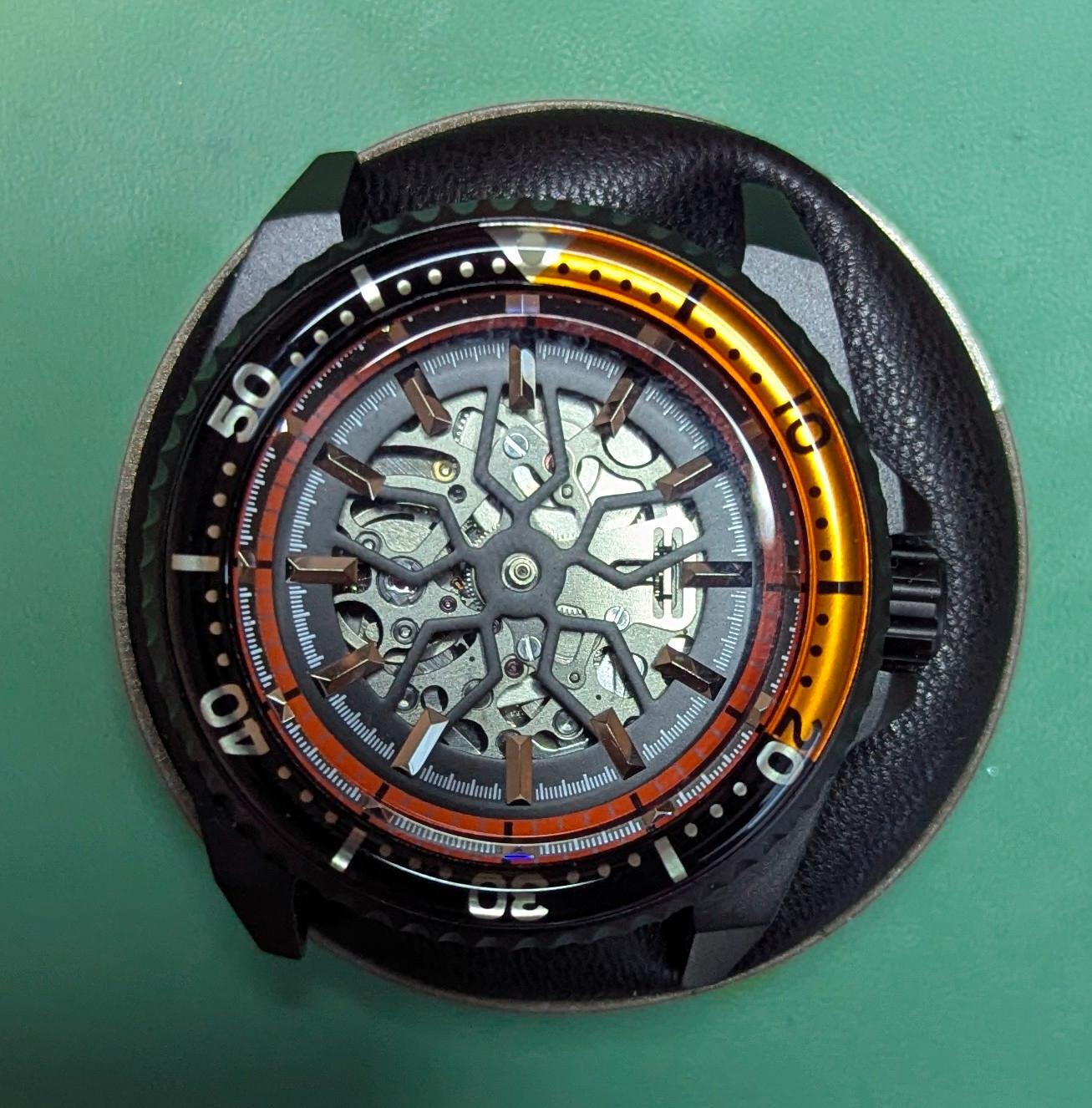Screwdrivers dressing
-
Recently Browsing
- No registered users viewing this page.
-
Topics
-
Posts
-
By steve1811uk · Posted
Looked into this some more and I believe that some of the increase in rate is attributable to the drop in amplitude after 12 hours off wrist, from 300 to 275 degrees horizontal and some is due to the lower temperature (38 to 18 degrees). I can see that approx 3 to 4 seconds a day is attributable to each. I can be happy with that. -
Link below shows the tool used to push the stud out. You can make the tool , just file a screwdriver to this shape. https://www.esslinger.com/bergeon-16918-etachron-stud-remover-screwdriver/ There are vids on YouTube showing how the stud is to be push out. Shouldn't get over creative, just go by this approach. Good luck.
-
I tried pushing to dome the washer in and had no success, but stuffing it full of o-ring gaskets worked much better than I expected. It takes some pressure but not as much as you might imagine, but it does take patience ... and a couple of dozen small gaskets. I used the pendant tube of a watch case to stuff the gaskets in as I didn't have a way to machine a tool to suit.
-
I can't answer your question, sorry, but you probably don't what to transfer the spring to a new wheel. Springs and wheels are paired ("vibrated" together) to get the right timing and transferring the spring to a new wheel is quite likely to see you minutes per day out with no way to correct it. Some may tell you to replace the balance staff, but if you're a beginner you're probably better off sourcing a replacement "balance complete" if you can: staff, roller, wheel and spring already assembled as a unit.
-
I'm sure it's the ancien. My measurements: A = 342. The slight bend in the pivot would make much less than a thousandth of a mm difference to this so I don't think 348 is plausible unless there has been significant wear on the pivots. B is hard to measure without first removing the balance wheel. I measured to the other side of the balance wheel as best I could (263) then subtracted the thickness of the wheel (69) to get 194. This could easily be three or four hundredths out, so 195 looks right. (196 could also be right.) J couldn't be measured. I did my best to measure where the balance wheel has been riveted on and got about 95, so 85 before riveting is plausible. (60 is not.) G again couldn't be measured without first removing the roller. I get 37 where the staff emerges from the roller so 41 at the other end of the taper seems plausible. (43 is also plausible to me.) K = 60. (Definitely larger than 55.) I've never replaced a balance staff; it'll be a new adventure for me. I'll have to read up on how to maximise my chance of removing the old one without damaging the balance wheel without having access to a lathe. I also need to explore how to remove the roller without damaging it. I won't actually place an order until I've gone through the rest of the movement. With the number of issues I've already found, I'll be amazed if I don't have more surprises in store. There are some watch part suppliers in Australia but nothing like Cousins or Otto Frei or Jules Borel. AllTimeCo is fine for basic parts for modern watches: batteries, bands, some crowns, stems, seals, movements, some tools, etc., but not really anything for vintage watches. Australian Jewellers Supplies is similar. Cousins charges about £9 for shipping to Australia which is about AU$19 and not too bad (considering Australian parcel post is $11) but I still want to minimise the number of times I'm paying it. I need to explore other options closer to home. There may be something in Singapore or China that would have what I want and ship it faster/more economically.
-




.thumb.jpg.19a9c4ff164d78d516aa9f05a063752b.jpg)



Recommended Posts
Join the conversation
You can post now and register later. If you have an account, sign in now to post with your account.
Note: Your post will require moderator approval before it will be visible.